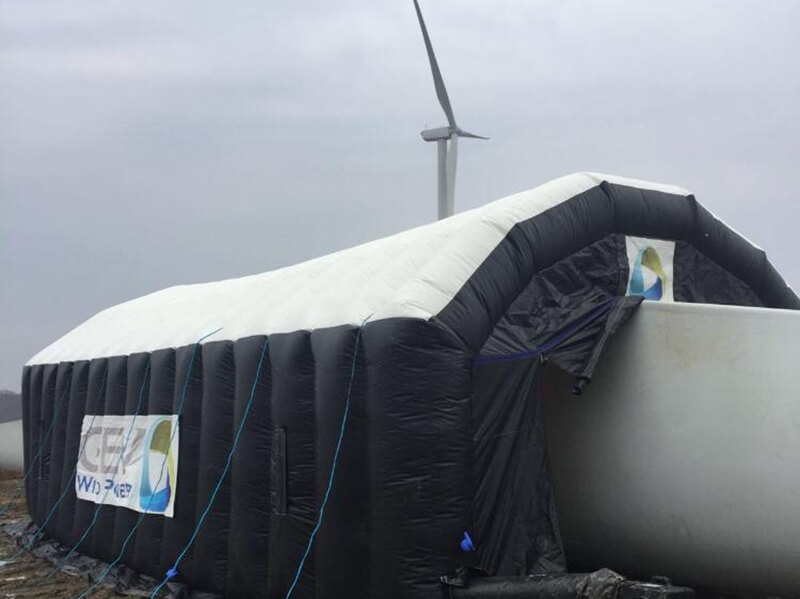Wind and harsh conditions typical of wind sites can turn blade repairs into a serious safety hazard for wind techs. To mitigate such risks, one company suggests bringing blades down to ground level for safer and faster turnaround time.

Inside the ground-based Ventura Habitat, wind technicians can repair turbine blades without regard to wind or weather. GEV Wind Power also offers an up-tower Habitat here.
“Three blades on one turbine can be refurbished and returned to service on the turbine in 48 hours,” says Daniel Boon, General Manager of GEV Wind Power and a former wind technician. GEV is an independent service provider for blade maintenance service, which offers a ground-based “Habitat” or enclosure with controlled environmental conditions. This method eliminates the standby periods that typically accompany poor weather and up-tower repairs.
“Bringing the blades down from the nacelle is much safer,” says Boon. “With a special cradle, it only takes about an hour to get the blades to the ground, and another 30 minutes to erect the habitat over the blade,” says Boon.
In addition to safety, there are several advantages of a team working repairs on the ground rather than up-tower. “Weather is less of an influence, so the seasonal repair window is wider than with other repair methods. And working on the ground lets a tech focus more easily on the job and less on safety issues.”
GEV designed and built the patented Ventura Habitat, an inflatable enclosure for blade repairs by technicians using blade-climbing platforms. Boon’s team realized that while the suspended Habitat worked well, it worked just as well on the ground.
He says that two teams of two technicians can work around the clock in 12-hour shifts and complete the work of composite structural repairs, repairing the leading edge and applying protection as required. “Plus, those working on the ground need not have the rope-access training, so their hourly charge is lower.”
Additionally, in the Habitat, the ideal temperatures can be set for the blade materials, including the lowest needed for two-part materials.
“As demands on blades increase through harsher operating environments, the stresses and strains on wind-turbine blades get ever more severe. It’s important to ensure a safe working environment for techs and an ideal one for proper blade repairs,” adds Boon.
Filed Under: Construction, News, O&M




